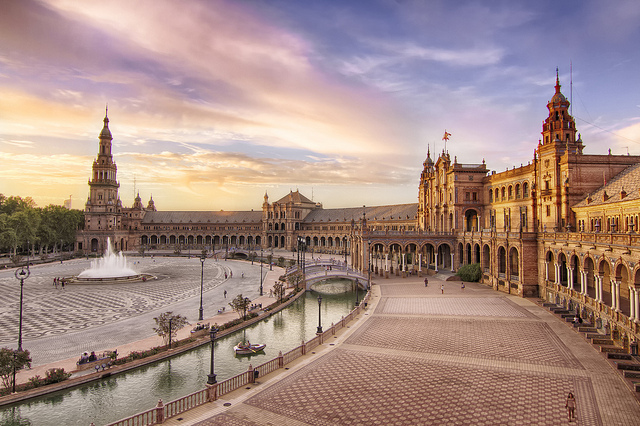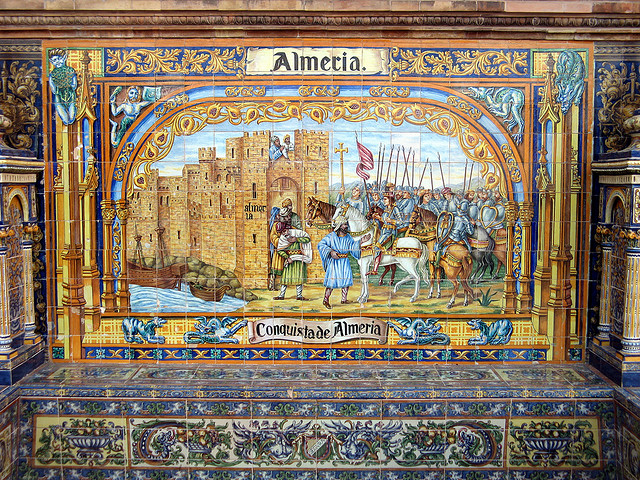Any avid traveler needs an active imagination. When visiting places and monuments we often wonder, who designed this cathedral? Why did the main tower burn down? How long did it take to build this bridge? And that’s why we need expert guides to tell us all about past events. Well, we’ll be your guide today.

Close your eyes and place yourselves in Seville, a century ago. The year 1914 marked the start of all construction work on Plaza de España by architect Aníbal González, whose statue adorns the square today. Designed with the occasion of the Ibero-American Exposition of 1929, the square would not be fully completed until one year before the event. This is a brick monument representative of the regional architecture, characterized by its reflection of the aesthetics of the site, including decorative ceramics, woodwork, cast iron and carved marble.
For those not fortunate enough to have visited, Seville’s Plaza de España, it is shaped like an oval over 200 meters in diameter. The oval is circumscribed within an impressive building with a tower at each end of the North and South wings, symbolizing Spain’s embrace over its new world colonies, and facing the Guadalquivir river, which was the way to America. Besides the grand fountain at its center, there is also a canal with four bridges representing the old four kingdoms of Spain (Castile, Leon, Aragon and Navarre).
On the inner circumference of the semicircle, we find a series of benches, each of them decorated with a relevant historical event, the coat of arms and the map of each of the forty-eight Spanish provinces. Starting with Alava and ending up with Zaragoza, the provinces are arranged alphabetically with the exception of Seville, which appears in several murals at the either side of each of the arches. The Seville murals include various themes, like Monumental Seville, Farming Seville, Agricultural Seville, etc. The set of them form a collage of professionally handcrafted, colorful tiles that are just breathtaking.

Other elements contributing to the Plaza’s perfect finish are, for instance, the relief busts we find between the arches. These all depict prominent characters from Spain’s historical past, like Christopher Columbus, Isabella the Catholic, Hernán Cortés, Saint John of the Cross, Cervantes, and another forty-six world-famous historical figures. To end with, the streetlights, railings and bridges over the canal all add to the elegance of the decor, all elements of which have undergone careful restorative work over the years.
This is one of the best images to keep in your memory from a visit to Seville. You’ll find that booking an apartment in Seville and letting the wonders of this emblematic plaza astound you is well worth it.

 English
English Français
Français Deutsch
Deutsch Italiano
Italiano Español
Español